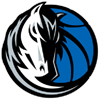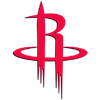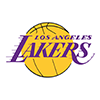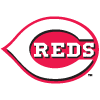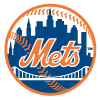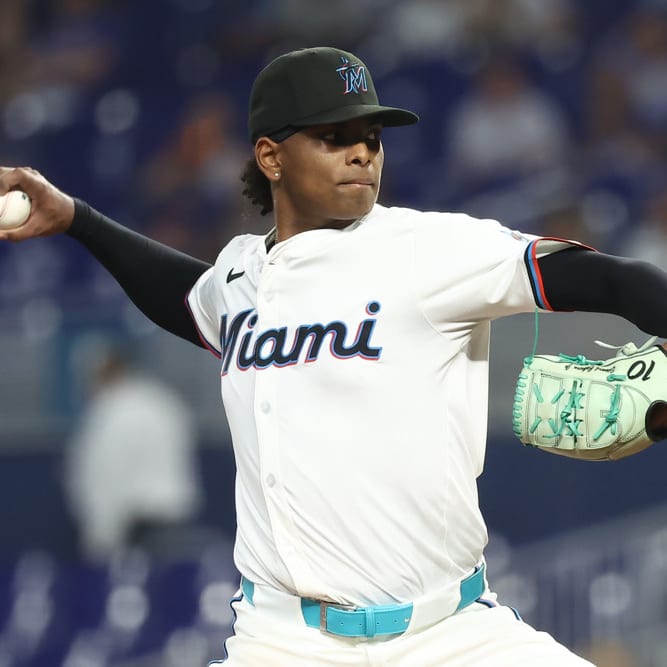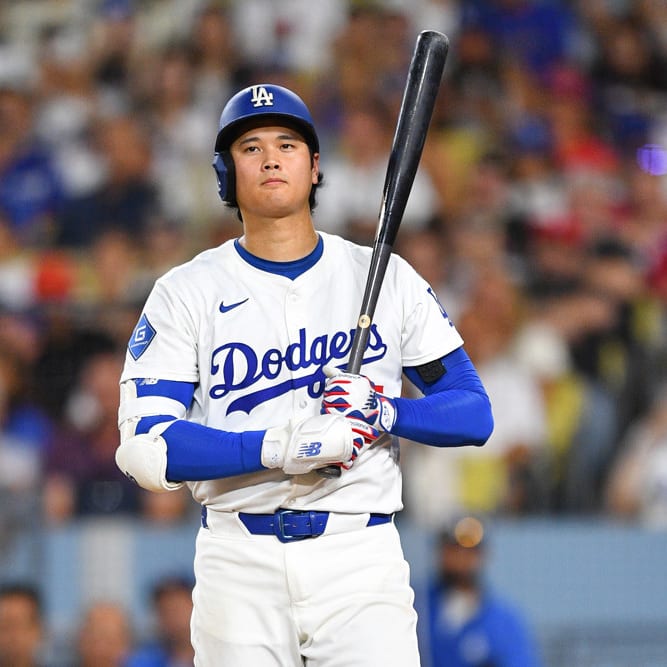A note on swinging strike rate (pitches swung and missed/total pitches): I prefer to use swinging strike rate (SwStr%) over other per-pitch metrics because it shows both the intent to swing and whether contact is made. For hitters, two things could be happening: they do not have the bat speed to make contact on high-velocity pitches, or they have the bat speed but can't determine the pitch type and location. Most times, it's a combination of the pair.
With fastballs getting faster and faster over the past two decades, batters who can't hit them usually find themselves out of the league unless they have another elite skill such as defense or power. I'm going to look back at the beginning of the 2025 season to see how hitters who swung and missed against fastballs in that first month performed over the entire season.
This article has been through several iterations. During the season, I noticed several hitters who were struggling with fastballs. When looking at the list of players, the season-long results weren't actionable. It was more like "Here are some hitters who struggled with fastballs, and most got demoted."
Instead, I limited the sample of those struggling against fastballs and looked at their future results, and a simple action emerged. Has the player been good in previous seasons? If so, hold. If not, move on. A simple and obvious solution, but sometimes simple and obvious works.
In all, I have a sample size of 402 hitters. For each of
A note on swinging strike rate (pitches swung and missed/total pitches): I prefer to use swinging strike rate (SwStr%) over other per-pitch metrics because it shows both the intent to swing and whether contact is made. For hitters, two things could be happening: they do not have the bat speed to make contact on high-velocity pitches, or they have the bat speed but can't determine the pitch type and location. Most times, it's a combination of the pair.
With fastballs getting faster and faster over the past two decades, batters who can't hit them usually find themselves out of the league unless they have another elite skill such as defense or power. I'm going to look back at the beginning of the 2025 season to see how hitters who swung and missed against fastballs in that first month performed over the entire season.
This article has been through several iterations. During the season, I noticed several hitters who were struggling with fastballs. When looking at the list of players, the season-long results weren't actionable. It was more like "Here are some hitters who struggled with fastballs, and most got demoted."
Instead, I limited the sample of those struggling against fastballs and looked at their future results, and a simple action emerged. Has the player been good in previous seasons? If so, hold. If not, move on. A simple and obvious solution, but sometimes simple and obvious works.
In all, I have a sample size of 402 hitters. For each of them, I found the average of their swinging-strike rates (SwStr%) against four-seam and sinking fastballs over the first month.
First, I grouped the hitters by their April swinging strike rate and then found their season-long stats.
April FB SwStr% | Full-season K% | Full-season AVG | Full-season OPS |
|---|---|---|---|
18% or more | 34.3% | .192 | .586 |
16-18% | 30.0% | .220 | .629 |
14-16% | 30.9% | .202 | .599 |
12-14% | 28.2% | .213 | .650 |
10-12% | 26.0% | .225 | .665 |
8-10% | 24.5% | .236 | .694 |
6-8% | 23.5% | .236 | .691 |
4-6% | 20.3% | .241 | .697 |
0-4% | 17.9% | .247 | .692 |
The batting average and OPS don't start improving to respectable levels until a hitter's swinging strike rate against fastballs gets under 14 percent. They don't stabilize until the batters get below the 10 percent threshold.
Here are the batters in the first grouping for hitters with a greater than 18 percent swinging strike rate:
| Name | PA | FF SwStr% | SI SwStr% | Avg SwStr% | Max SwStr% | K% | AVG | OPS |
|---|---|---|---|---|---|---|---|---|
| Jarred Kelenic | 65 | 25.0% | 35.7% | 30.4% | 35.7% | 35.4% | .167 | .531 |
| Zac Veen | 37 | 34.4% | 20.7% | 27.5% | 34.4% | 37.8% | .118 | .424 |
| Ryan Kreidler | 44 | 15.1% | 26.3% | 20.7% | 26.3% | 43.2% | .105 | .296 |
| Michael Taylor | 325 | 17.1% | 23.8% | 20.4% | 23.8% | 33.8% | .200 | .625 |
| Francisco Alvarez | 277 | 29.6% | 8.3% | 19.0% | 29.6% | 26.4% | .256 | .787 |
| Hayden Senger | 78 | 16.7% | 20.8% | 18.8% | 20.8% | 28.2% | .181 | .415 |
| Gabriel Arias | 471 | 20.0% | 16.9% | 18.5% | 20.0% | 34.4% | .220 | .638 |
| Kyle Stowers | 457 | 22.4% | 14.0% | 18.2% | 22.4% | 27.4% | .288 | .912 |
| Kyren Paris | 140 | 18.9% | 17.4% | 18.1% | 18.9% | 42.1% | .190 | .647 |
Two names stick out as being productive: Francisco Alvarez and Kyle Stowers. Both got by with career-high BABIPs (.321 and .356) and decent power (.199 and .256 ISO).
On the other end of the spectrum, Paris started on fire, hitting .440/.533/1.120 with five homers over his first 10 games. Over the rest of the season (110 PA), he hit just one home run while batting .129/.193/.198.
And now the next grouping of hitters with a swinging strike rate against fastballs between 16 and 18 percent:
| Name | PA | FF SwStr% | SI SwStr% | Avg SwStr% | Max SwStr% | K% | AVG | OPS |
|---|---|---|---|---|---|---|---|---|
| Bryan De La Cruz | 50 | 13.5% | 21.1% | 17.3% | 21.1% | 36.0% | .191 | .453 |
| Rob Refsnyder | 209 | 19.4% | 13.6% | 16.5% | 19.4% | 25.8% | .269 | .838 |
| Ryan Bliss | 39 | 22.2% | 10.3% | 16.3% | 22.2% | 28.2% | .200 | .596 |
Only three names, and the one with the most plate appearances was a weak-side platoon bat.
On to the next group, the hitters between 14 and 16 percent:
| Name | PA | FF SwStr% | SI SwStr% | Avg SwStr% | Max SwStr% | K% | AVG | OPS |
|---|---|---|---|---|---|---|---|---|
| Rafael Devers | 729 | 17.8% | 12.9% | 15.4% | 17.8% | 26.3% | .252 | .851 |
| Derek Hill | 149 | 16.7% | 13.6% | 15.2% | 16.7% | 32.2% | .216 | .609 |
| Christian Koss | 191 | 12.9% | 16.7% | 14.8% | 16.7% | 23.6% | .264 | .676 |
| Riley Adams | 286 | 11.1% | 18.2% | 14.6% | 18.2% | 38.5% | .186 | .560 |
| Davis Schneider | 227 | 15.0% | 14.3% | 14.6% | 15.0% | 26.4% | .234 | .797 |
| Jose Siri | 36 | 20.8% | 8.3% | 14.6% | 20.8% | 47.2% | .063 | .292 |
| Oscar Gonzalez | 61 | 18.6% | 10.5% | 14.6% | 18.6% | 21.3% | .220 | .483 |
| Christopher Morel | 305 | 15.0% | 13.6% | 14.3% | 15.0% | 35.7% | .219 | .684 |
| Drew Waters | 219 | 22.5% | 5.9% | 14.2% | 22.5% | 27.4% | .243 | .603 |
| Dansby Swanson | 645 | 18.8% | 9.4% | 14.1% | 18.8% | 26.0% | .244 | .717 |
| MJ Melendez | 65 | 17.0% | 11.1% | 14.1% | 17.0% | 35.4% | .083 | .321 |
Devers immediately sticks out, but he's always struggled with four-seam fastballs, with a career 16 percent swinging strike rate against them. Like Alvarez and Stowers, he has enough power to be a positive contributor.
Two other guys who contributed were Dansby Swanson and Davis Schneider. In Swanson's age-31 season, he struggled against four-seamers, with a career-high 16.7 percent swinging strike rate (up from 11 percent in 2024). Teams didn't take advantage of the weakness, but Swanson could be in trouble if the trend continues.
For Schneider, the early struggles cost him his job. When he got demoted in April, he was hitting just .067/.333/.067. He must have worked on some changes in AAA. When he returned, he hit .249/.364/.468.
There was some hope for some of these hitters to be productive (e.g. Morel and Siri), but only the established batters powered their way through.
Now onto the 12-to-14 percent swinging strike rate group:
| Name | PA | FF SwStr% | SI SwStr% | Avg SwStr% | Max SwStr% | K% | AVG | OPS |
|---|---|---|---|---|---|---|---|---|
| Austin Riley | 447 | 10.9% | 16.7% | 13.8% | 16.7% | 28.6% | .260 | .737 |
| Nick Maton | 63 | 9.9% | 17.4% | 13.6% | 17.4% | 30.2% | .167 | .601 |
| Brandon Lowe | 553 | 15.9% | 11.3% | 13.6% | 15.9% | 26.9% | .256 | .785 |
| Paul DeJong | 208 | 17.5% | 9.7% | 13.6% | 17.5% | 33.7% | .228 | .642 |
| Matt Mervis | 134 | 21.4% | 5.6% | 13.5% | 21.4% | 37.3% | .175 | .637 |
| Julio Rodriguez | 710 | 20.0% | 6.9% | 13.4% | 20.0% | 21.4% | .267 | .798 |
| Donovan Solano | 179 | 21.9% | 5.0% | 13.4% | 21.9% | 22.3% | .247 | .628 |
| Luke Raley | 219 | 17.4% | 8.2% | 12.8% | 17.4% | 29.2% | .202 | .631 |
| Christian Encarnacion-Strand | 137 | 15.9% | 9.6% | 12.7% | 15.9% | 23.4% | .208 | .610 |
| Matt Wallner | 392 | 17.5% | 8.0% | 12.7% | 17.5% | 29.1% | .202 | .776 |
| Max Muncy | 220 | 20.7% | 4.7% | 12.7% | 20.7% | 30.9% | .214 | .638 |
| Heston Kjerstad | 167 | 7.0% | 17.9% | 12.4% | 17.9% | 26.9% | .192 | .566 |
| Tyler O'Neill | 209 | 15.8% | 8.9% | 12.4% | 15.8% | 24.4% | .199 | .684 |
| Oliver Dunn | 41 | 18.6% | 5.6% | 12.1% | 18.6% | 26.8% | .167 | .427 |
| Jordan Walker | 396 | 15.6% | 8.5% | 12.0% | 15.6% | 31.8% | .215 | .584 |
| Thomas Saggese | 295 | 13.6% | 10.3% | 12.0% | 13.6% | 28.1% | .258 | .641 |
| Byron Buxton | 542 | 13.8% | 10.1% | 12.0% | 13.8% | 27.3% | .264 | .878 |
| Dane Myers | 333 | 18.7% | 5.3% | 12.0% | 18.7% | 23.1% | .235 | .617 |
The biggest thing this group has going for it is that their average strikeout rate is under 30 percent. We know some hitters can be useful in this strikeout range but they need to be elite elsewhere (see Buxton).
Austin Riley has his worst overall season since 2020. He was barely better league average with a .737 OPS. It's the fourth year in a row he's seen his OPS drop (from .898 to .878 to .861 to .783 to .737). The 28-year-old might have peaked sooner than the average batter.
Yet again, Julio Rodriguez wasn't ready for the season to start. He posted a .676 OPS in April but was able to raise it to a .798 OPS by season's end. His end-of-season stats are always around a 30/30/.275 bat, but it's slow getting there.
Conclusion
After examining the players who can overcome a high swing-and-miss rate against fastballs, they are established, good major leaguers. The reason might be because their team knows they will eventually work out the funk, while a new guy struggling with the same issue will get sent to AAA to figure it out. Or perhaps it's because these players have other skills (mainly power) that keep them in the lineup.
Now, some non-established regulars got a long run (e.g. Wallner, Walker, Arias) and never really pulled it together, even though their team gave them every opportunity.
When next season starts, keep an eye on anyone not keeping up with fastballs. If they aren't a regular, it might be time to move on.








